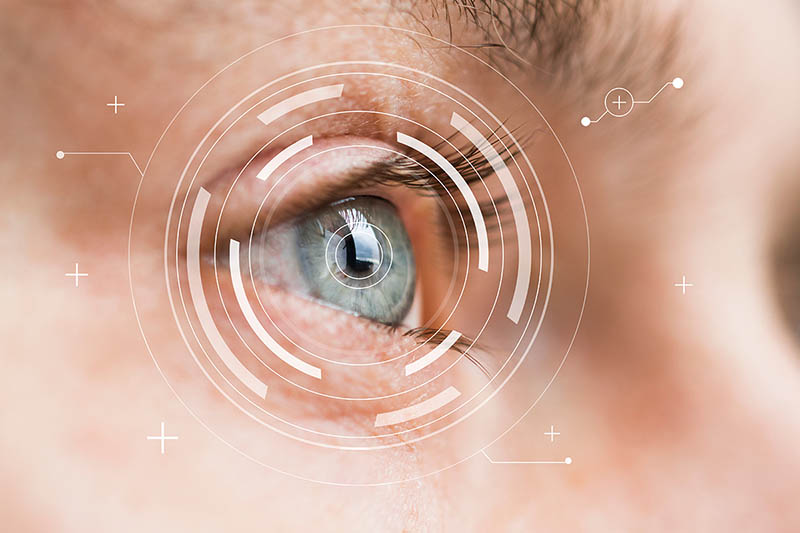4 Age-Related Eye Diseases to Know
Understanding the most common age-related eye diseases and their warning signs can help you know when to head to the eye doctor.

Your risk of developing certain illnesses increases as you age. This is also true for eye health. Your vision generally begins to decline in your early 40s. You may notice that you need more light to see, you aren’t able to read as well up close, or colors aren’t as vibrant as they once were.
Macular degeneration, glaucoma, retinal detachment, and cataracts are common eye diseases experienced by older individuals. Understanding each of these eye diseases along with their warning signs can help you know when to schedule an appointment with either an optometrist or ophthalmologist.
Related: 7 Vital Ways to Keep Your Eyes Healthy
Macular degeneration
Macular degeneration is a condition that affects the macula, which is located at the center of the retina. This portion of the eye is responsible for central, focused vision. Although macular degeneration rarely causes complete blindness, it can diminish the central vision, making it hard for those impacted to drive, read, or see what’s around them.
In the early stages, macular degeneration may not have any symptoms. As it progresses, the central vision may start to look blurry or wavy, but the peripheral vision typically isn’t affected.
Although macular degeneration doesn’t have a cure, some treatments can slow the progression of the disease. Laser surgery and drug injections have proven successful. Additionally, visual aids such as magnifying glasses can help individuals read or look at things up close.
Nearly 7% of Americans who are 40 years or older have a degree of this disease. In addition to age, other risk factors include high blood pressure, race, a family history of macular degeneration, and tobacco use.
Glaucoma
Glaucoma is an age-related eye disease caused by an increase in the pressure in the eye. Unfortunately, it’s not easy to know when you have glaucoma as people typically have few to no early symptoms. Approximately one million people may have glaucoma and do not know it.
If the pressure level goes up in the eye, this can cause damage to the optic nerve, which can then result in vision loss or complete blindness. As the disease progresses, it can cause some visual symptoms, such as a decline in the side or peripheral vision and worsening tunnel vision.
Medications can help lower the pressure in the eyes, some of which are offered in pill form and others in eye drop form. But for some people, medication isn’t enough to treat the condition and they require surgery.
A main surgical treatment for glaucoma is a trabeculectomy. It uses a laser to improve the way fluid can flow out of the eye, which lowers the pressure, while the latter involves creating a new drainage path beneath the eyelid.
In addition to age, other risk factors for glaucoma include near-sightedness, the use of steroid medications, and a family history of the disease.
Retinal detachment
If the retina separates from its support at the back of the eye, the result is a condition known as a detached retina. As people age, the vitreous (gel-type fluid) in the eye shrinks and changes in texture.
This can cause the retina to detach, which can cause permanent vision loss and blindness if not treated right away. Although retinal detachment isn’t painful, it can cause the sudden appearance of flashes of light and floaters in the visual field. This symptom should not be ignored.
Other symptoms include a loss of vision or the feeling of a shadow coming over the eyes. A retinal specialist may be able to reattach the retina and restore the vision.
Cataracts
Cataracts are extremely common in the aging population. The lens in your eye should be clear, but over time, it may start to cloud over, resulting in blurred vision.
Cataracts form slowly and prevent light from passing through the lens to the retina. In some cases, a cataract may remain small for years and not require surgical intervention. But when cataracts become large and/or thick, they can be surgically removed.
During cataract surgery, an ophthalmologist removes the clouded lens and replaces it with a clear plastic lens. Some patients opt for a prescription lens that improves their vision, eliminating the need for contacts or glasses.
By understanding the signs and risk factors for these common age-related eye diseases, you can be better prepared if you experience any of the symptoms. Taking preventive measures can help as well. Make sure to have regular eye exams to protect your ocular health and vision.
Related: 15 Things That Will Surprise you About the Human Eye






